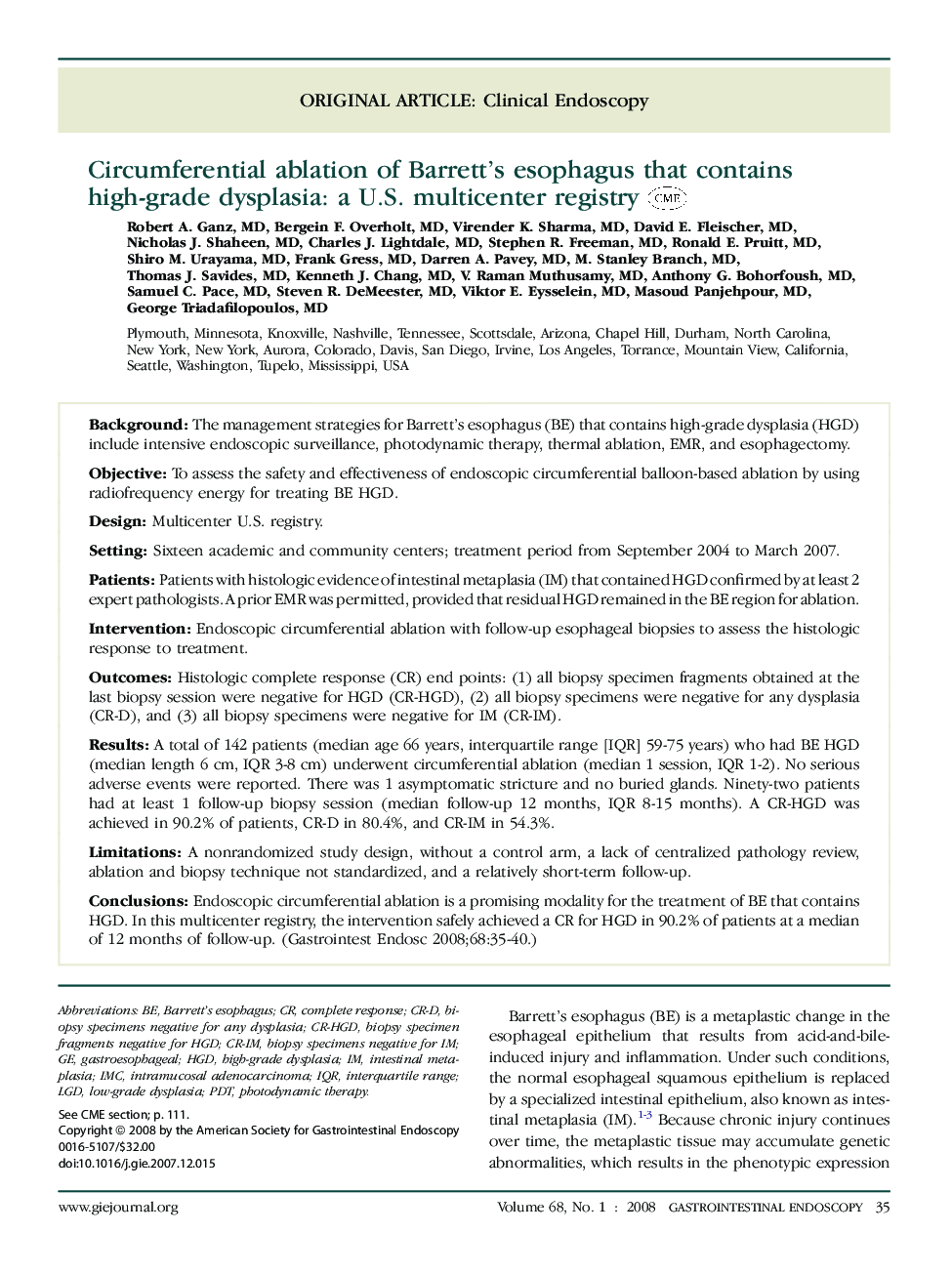| Article ID | Journal | Published Year | Pages | File Type |
|---|---|---|---|---|
| 3307442 | Gastrointestinal Endoscopy | 2008 | 6 Pages |
BackgroundThe management strategies for Barrett's esophagus (BE) that contains high-grade dysplasia (HGD) include intensive endoscopic surveillance, photodynamic therapy, thermal ablation, EMR, and esophagectomy.ObjectiveTo assess the safety and effectiveness of endoscopic circumferential balloon-based ablation by using radiofrequency energy for treating BE HGD.DesignMulticenter U.S. registry.SettingSixteen academic and community centers; treatment period from September 2004 to March 2007.PatientsPatients with histologic evidence of intestinal metaplasia (IM) that contained HGD confirmed by at least 2 expert pathologists. A prior EMR was permitted, provided that residual HGD remained in the BE region for ablation.InterventionEndoscopic circumferential ablation with follow-up esophageal biopsies to assess the histologic response to treatment.OutcomesHistologic complete response (CR) end points: (1) all biopsy specimen fragments obtained at the last biopsy session were negative for HGD (CR-HGD), (2) all biopsy specimens were negative for any dysplasia (CR-D), and (3) all biopsy specimens were negative for IM (CR-IM).ResultsA total of 142 patients (median age 66 years, interquartile range [IQR] 59-75 years) who had BE HGD (median length 6 cm, IQR 3-8 cm) underwent circumferential ablation (median 1 session, IQR 1-2). No serious adverse events were reported. There was 1 asymptomatic stricture and no buried glands. Ninety-two patients had at least 1 follow-up biopsy session (median follow-up 12 months, IQR 8-15 months). A CR-HGD was achieved in 90.2% of patients, CR-D in 80.4%, and CR-IM in 54.3%.LimitationsA nonrandomized study design, without a control arm, a lack of centralized pathology review, ablation and biopsy technique not standardized, and a relatively short-term follow-up.ConclusionsEndoscopic circumferential ablation is a promising modality for the treatment of BE that contains HGD. In this multicenter registry, the intervention safely achieved a CR for HGD in 90.2% of patients at a median of 12 months of follow-up.
